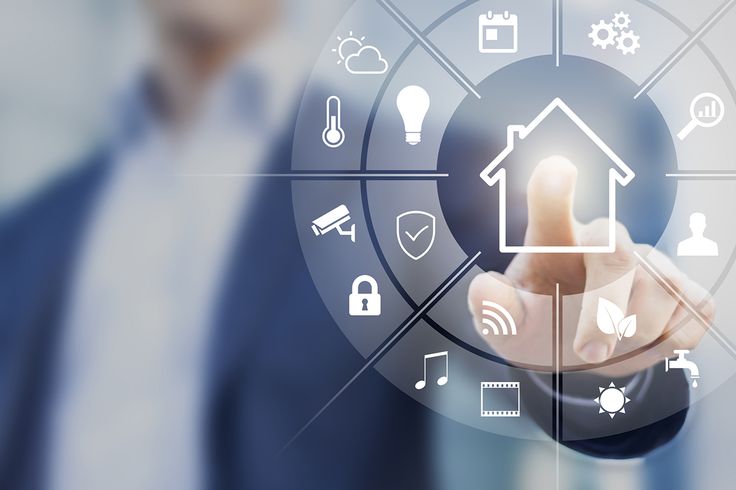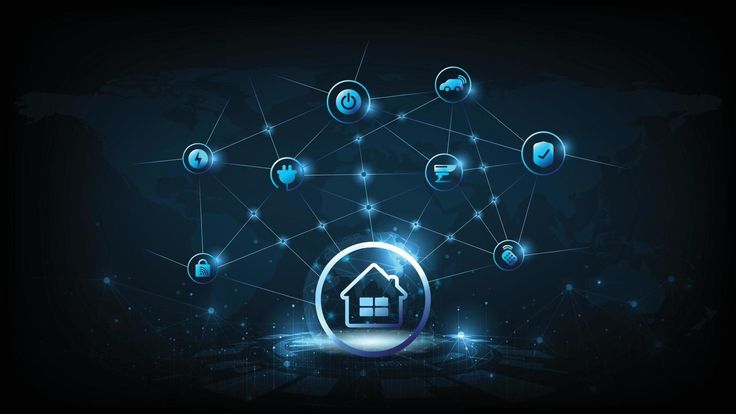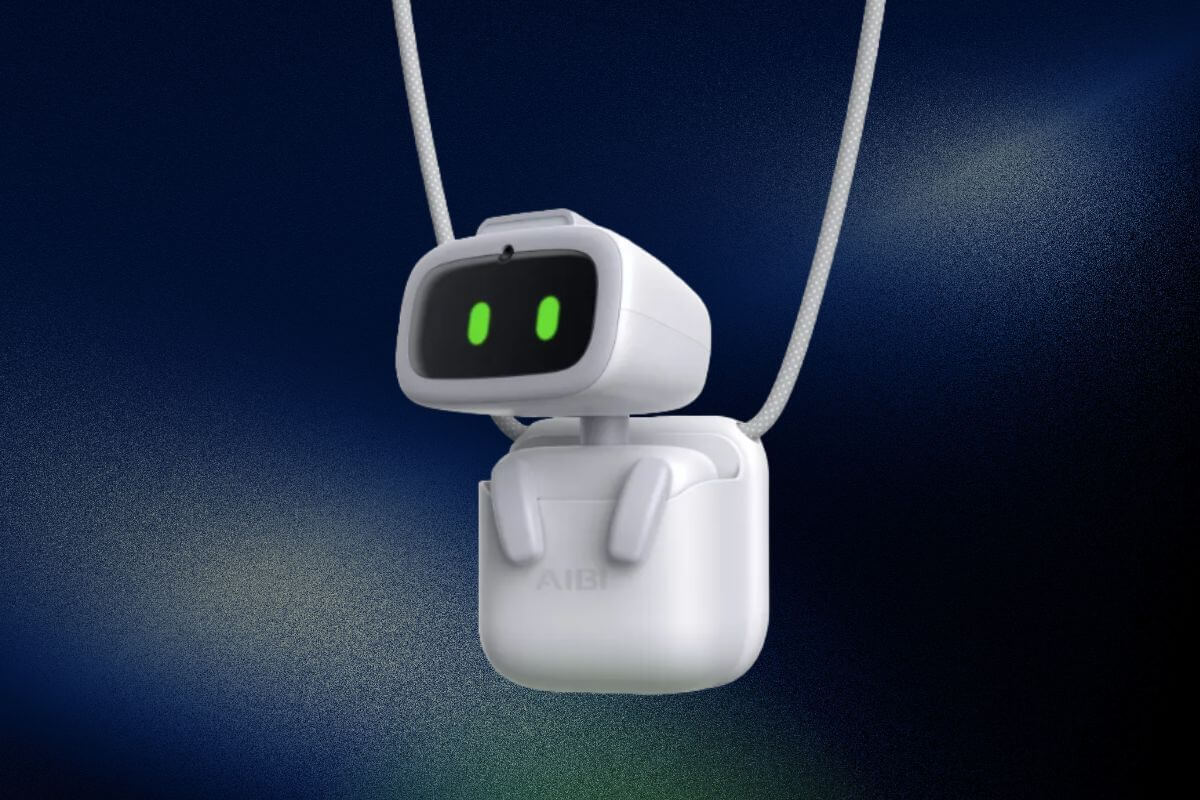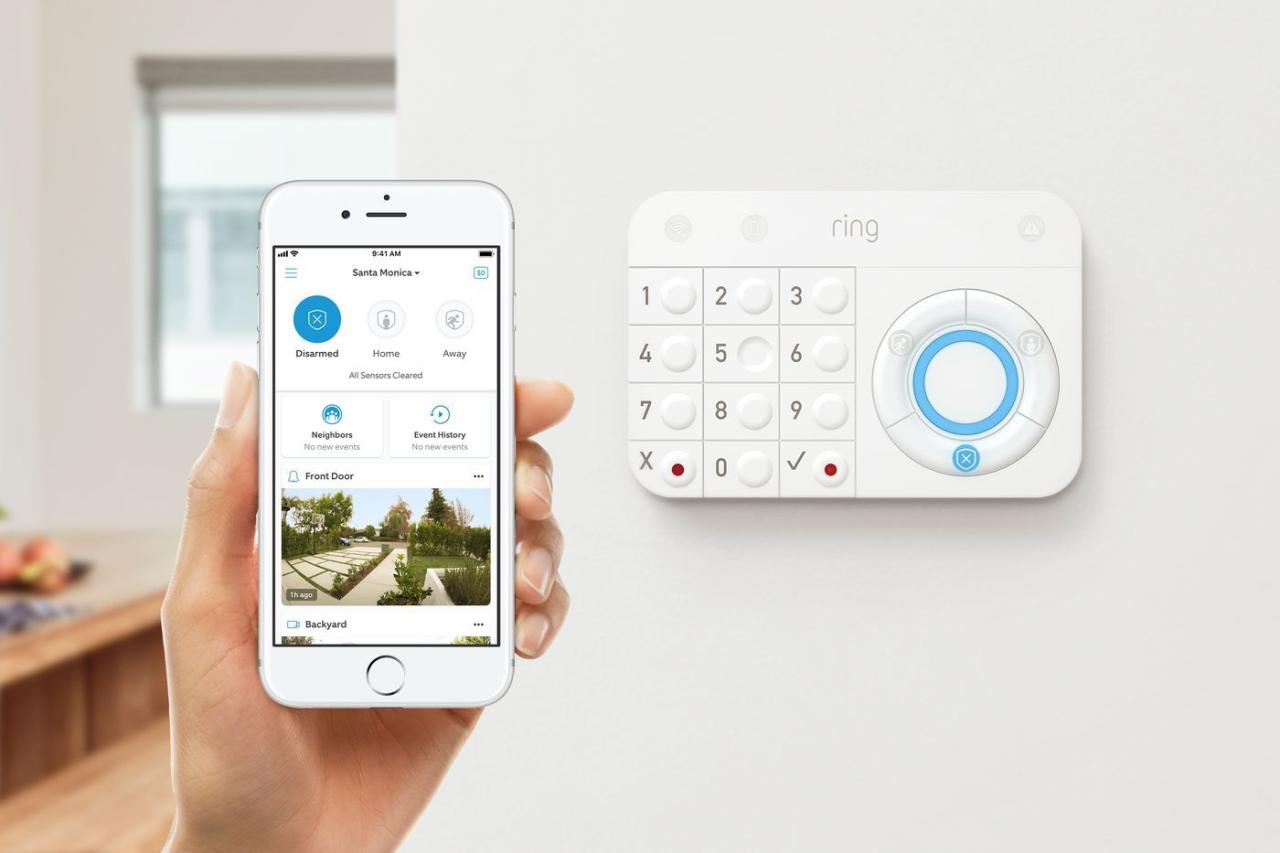Redefining the Domestic Experience
The concept of the “home” has always evolved with technological progress. From the introduction of electricity and indoor plumbing to the advent of home computing, each era has reshaped our domestic spaces. Today, we stand on the cusp of another profound transformation: the Connected Home, often referred to as a Smart Home. This isn’t just about controlling lights with your voice; it’s about creating an intelligent, responsive, and intuitive living environment that anticipates your needs, enhances your comfort, optimizes energy consumption, and bolsters your security. Fueled by advancements in the Internet of Things (IoT), Artificial Intelligence (AI), and robust connectivity, the smart home is rapidly moving from a niche luxury to an accessible reality, fundamentally redefining how we interact with our living spaces and profoundly impacting our daily lives. This comprehensive article delves into the intricate components of the connected home, exploring the foundational technologies that enable it, its myriad benefits, the challenges it presents, and the exciting trajectory of its future development.
The Foundation of Intelligence: How Connected Homes Work
At its core, a connected home relies on a network of devices that communicate with each other and often with a central hub or cloud-based platform. This intricate ecosystem allows for centralized control, automation, and intelligent decision-making.
A. Internet of Things (IoT): The Network of Things
The Internet of Things (IoT) is the backbone of the connected home. It refers to the vast network of physical objects embedded with sensors, software, and other technologies for the purpose of connecting and exchanging data with other devices and systems over the internet.
- Sensors and Actuators: IoT devices in a smart home are equipped with various sensors (e.g., motion, temperature, light, humidity, door/window open/close) that collect data from the environment. They also contain actuators, which are components that perform actions based on commands received (e.g., turning a light on, adjusting a thermostat, locking a door).
- Connectivity Protocols: These devices communicate using a range of wireless protocols.
- Wi-Fi: Common for devices requiring higher bandwidth, like smart cameras or streaming devices, but can consume more power.
- Bluetooth: Ideal for short-range, low-power connections, often used for device setup or direct control of nearby gadgets.
- Zigbee and Z-Wave: These are mesh networking protocols specifically designed for smart home devices. They consume very little power, create a robust and self-healing network (where devices can relay signals for others), and are highly reliable for automation tasks.
- Thread: A relatively newer, IP-based mesh networking protocol, offering advantages in terms of interoperability and security.
- Matter: A universal open-source connectivity standard aimed at ensuring seamless interoperability between smart home devices from different manufacturers, addressing the long-standing fragmentation issue.
- Cloud Computing: Much of the data collected by smart home devices is sent to cloud servers for processing, analysis, and storage. This allows for features like remote access, historical data logging, and complex AI computations.
- Edge Computing: Increasingly, some data processing occurs directly on the device itself (at the “edge” of the network), reducing latency, enhancing privacy, and lowering reliance on constant internet connectivity for basic functions.
B. Artificial Intelligence (AI) and Machine Learning (ML)
While IoT provides the connectivity, Artificial Intelligence (AI) and Machine Learning (ML) infuse intelligence into the connected home. AI enables devices to learn from user behavior, environmental conditions, and external data sources to make autonomous, proactive decisions.
- Behavioral Learning: Smart thermostats, for instance, learn your preferred temperature settings over time and adjust schedules automatically. Lighting systems can learn your daily routines and illuminate rooms before you enter them.
- Pattern Recognition: AI algorithms can identify patterns in energy consumption, security breaches, or even unusual sounds, triggering alerts or automated responses. For example, a security camera using AI can differentiate between a pet, a car, and an intruder.
- Predictive Analytics: Based on collected data and external information (like weather forecasts), AI can predict future needs. A smart irrigation system might adjust watering schedules based on upcoming rain, or a smart air purifier might activate when local air quality is expected to drop.
- Natural Language Processing (NLP): This allows for intuitive voice control through smart speakers and virtual assistants. NLP enables these devices to understand complex commands, answer questions, and engage in more natural conversations.
C. Central Hubs and Virtual Assistants
A central control point is often essential for orchestrating the various devices in a connected home.
- Smart Hubs: Dedicated hardware hubs (e.g., Samsung SmartThings, Hubitat) act as a central brain, often supporting multiple communication protocols (Zigbee, Z-Wave, Wi-Fi) to ensure compatibility across diverse devices. They allow for local automation rules to run even without an internet connection.
- Smart Speakers and Displays: Devices like Amazon Echo (Alexa), Google Nest Hub (Google Assistant), and Apple HomePod (Siri) serve as voice-controlled interfaces and often as central hubs. They provide a natural way to interact with the smart home, control devices, get information, and consume media.
- Mobile Apps: Almost all smart home devices are controlled via dedicated mobile applications, offering a graphical interface for setup, monitoring, and remote control from anywhere in the world.
Pillars of the Connected Home: Diverse Applications
The applications of connected home technology are vast and continue to expand, touching almost every aspect of domestic life.
A. Lighting Control: Illuminating Your World Intelligently
Smart lighting goes far beyond simple on/off switches, offering unparalleled control and ambiance.
- Remote Control and Scheduling: Turn lights on or off, dim them, or change colors from your phone, anywhere in the world. Schedule lights to turn on at sunset or off when you leave.
- Color and Temperature Adjustment: Create custom scenes for different moods or activities, from bright white for working to warm amber for relaxation. Some lights can even mimic natural daylight cycles.
- Motion and Occupancy Sensing: Lights can automatically turn on when you enter a room and off when you leave, saving energy.
- Voice Control: Integrate with smart assistants for hands-free control, e.g., “Alexa, dim the living room lights to 50%.”
- Geofencing: Lights can automatically turn on when you approach your home and off when you depart.
B. Climate Control: Optimal Comfort and Energy Efficiency
Smart thermostats and HVAC systems are key to maintaining comfort while minimizing energy consumption.
- Learning Thermostats (e.g., Nest, ecobee): These learn your temperature preferences and daily routines, automatically adjusting the heating and cooling to optimize comfort and energy savings. They can also use geofencing to detect when you’re away.
- Zoned Heating/Cooling: Control the temperature in individual rooms or zones independently, ensuring comfort where it’s needed most and saving energy in unoccupied areas.
- Air Quality Monitoring: Smart air purifiers and monitors track indoor air pollutants, allergens, and humidity, automatically activating purification or ventilation systems when necessary.
- Integration with Weather Forecasts: Systems can adjust pre-heating or pre-cooling based on upcoming weather changes.
C. Security and Surveillance: Peace of Mind
Connected home security systems offer advanced monitoring and control, providing enhanced safety for your property and loved ones.
- Smart Locks: Control access to your home remotely, grant temporary access codes to visitors, and receive notifications when doors are locked or unlocked. Some can automatically lock when you leave.
- Video Doorbells: See and speak to visitors from anywhere, even when you’re not home, and receive alerts for motion detection at your door. Many offer facial recognition to identify known individuals.
- Security Cameras: Indoor and outdoor cameras offer live streaming, motion detection alerts, two-way audio, and cloud storage for recorded footage. AI features can differentiate between people, animals, and vehicles, reducing false alarms.
- Sensors: Window and door sensors alert you to unauthorized entry, while glass-break sensors detect attempts to smash windows.
- Leak and Smoke Detectors: Smart leak detectors alert you to water leaks, preventing costly damage. Smart smoke and carbon monoxide detectors provide instant alerts to your phone, even if you’re away from home.
- Alarm Systems: Integrated systems can notify security services and trigger sirens in case of an intrusion.
D. Entertainment and Media: Immersive Experiences
The connected home transforms how we consume and manage entertainment.
- Smart TVs and Streaming Devices: Integrate with smart home ecosystems for voice control of content, volume, and playback.
- Multi-Room Audio Systems (e.g., Sonos, Google Home): Play music throughout your home, synchronize audio across different rooms, or play different content in separate areas.
- Voice-Controlled Media: Use smart speakers to control music, podcasts, radio, and video streaming services with simple voice commands.
- Home Theater Integration: Automate lighting, blinds, and audio settings to create the perfect cinematic experience with a single command.
E. Smart Appliances: The Intelligent Kitchen and Laundry
Traditional home appliances are becoming increasingly intelligent and connected.
- Smart Refrigerators: Track inventory, suggest recipes based on available ingredients, notify you when items are expiring, and even order groceries. Some have built-in screens for calendars and notes.
- Smart Ovens and Cooktops: Preheat remotely, monitor cooking progress, adjust settings, and even download recipes directly to the appliance.
- Smart Washing Machines and Dryers: Start cycles remotely, receive notifications when laundry is done, and optimize settings for different fabric types, sometimes even ordering detergent when supplies run low.
- Robotic Vacuum Cleaners: Use AI and mapping technology to navigate, clean efficiently, avoid obstacles, and return to their charging dock automatically. Some can self-empty their dustbins.
F. Home Automation and Routines: Seamless Living
The true power of a connected home lies in its ability to automate tasks and create personalized routines.
- Automated Scenes: Create “scenes” that trigger multiple actions with a single command or schedule. For example, a “Good Morning” scene might open blinds, turn on kitchen lights, and start the coffee maker.
- Sensor-Triggered Automations: Set up rules based on sensor data, such as lights turning on when motion is detected in a hallway after dark, or the AC turning on when the temperature exceeds a certain threshold.
- Geofencing Routines: Your home can react to your presence. When you leave, lights turn off, doors lock, and the thermostat adjusts. When you return, the house prepares for your arrival.
- Customizable Schedules: Automate recurring tasks like watering the garden, cleaning with the robot vacuum, or charging electric vehicles during off-peak hours.
Benefits of Embracing the Connected Home
The appeal of the connected home stems from a multitude of tangible benefits that enhance convenience, efficiency, and peace of mind.
A. Enhanced Convenience and Comfort
- Effortless Control: Manage all your devices from a single app or with voice commands, eliminating the need to manually adjust individual switches or settings.
- Personalized Environments: Your home adapts to your preferences, creating the ideal atmosphere for any activity or time of day.
- Time Savings: Automate repetitive tasks, freeing up your time for more enjoyable pursuits.
- Remote Accessibility: Control and monitor your home from anywhere with an internet connection, whether you’re at work or on vacation.
B. Improved Energy Efficiency and Cost Savings
- Optimized Heating and Cooling: Smart thermostats and zoned systems significantly reduce energy waste by only conditioning spaces when and where needed.
- Intelligent Lighting: Motion-sensing and scheduled lighting prevent lights from being left on unnecessarily.
- Appliance Monitoring: Track energy consumption of individual appliances to identify areas for improvement.
- Reduced Utility Bills: The cumulative effect of these optimizations can lead to substantial savings on electricity, heating, and cooling bills.
C. Enhanced Security and Safety
- Proactive Monitoring: Receive instant alerts for unusual activity, potential intrusions, smoke, carbon monoxide, or water leaks.
- Remote Surveillance: Check in on your home anytime through live camera feeds.
- Deterrence: Smart lighting can simulate occupancy when you’re away, deterring potential burglars.
- Rapid Response: Integrate with professional monitoring services for faster emergency response.
D. Increased Accessibility and Support for Independent Living
- Assisted Living: Smart home technology can empower elderly individuals or those with disabilities to live more independently by providing voice control for tasks, automated reminders, and remote monitoring by caregivers.
- Adaptive Environments: Adjustments to lighting, temperature, and device control can be tailored to specific accessibility needs.
- Emergency Assistance: Automated fall detection and emergency contact systems offer a layer of safety for vulnerable individuals.
E. Greater Property Value and Modern Appeal
- Modernization: A fully integrated smart home can increase the appeal and resale value of a property, as more homebuyers seek technologically advanced living spaces.
- Future-Proofing: Investing in smart home technology can help future-proof your home against obsolescence.
Challenges and Considerations: Navigating the Smart Home Landscape
While the benefits are compelling, integrating smart home technology comes with its own set of challenges and important considerations.
A. Interoperability and Ecosystem Fragmentation
One of the biggest hurdles for consumers has been the lack of seamless interoperability between devices from different manufacturers. Different brands often use proprietary systems or communication protocols, leading to isolated ecosystems.
- The Matter Standard: The advent of the Matter connectivity standard is a significant step towards addressing this, aiming to create a universal language for smart home devices, allowing them to work together regardless of brand.
B. Privacy and Data Security Risks
Smart home devices collect vast amounts of personal data, including routines, voice commands, video feeds, and even health metrics. This raises significant privacy concerns.
- Data Collection: Understanding what data is collected, how it’s used, and who it’s shared with is crucial.
- Cybersecurity Vulnerabilities: Any internet-connected device is a potential target for cyberattacks. Securing your smart home network, using strong passwords, and keeping device firmware updated are essential to prevent unauthorized access.
- Voice Assistant Privacy: Be mindful of what information you share with voice assistants, as recordings are often stored and analyzed.
C. Cost and Complexity of Setup
While entry-level smart devices are affordable, building a fully integrated smart home can be a significant investment. Additionally, setting up and configuring multiple devices and automations can be complex for users without technical expertise.
- Phased Implementation: Starting with a few key devices and gradually expanding the system can make it more manageable.
- Professional Installation: For complex systems, professional installers can ensure optimal setup and integration.
D. Reliance on Internet Connectivity
Many smart home features rely heavily on a stable internet connection. If your internet goes down, some or all of your smart home functionality may be disrupted. Devices with local control capabilities (via a hub) offer greater resilience.
E. User Experience and Reliability
A truly smart home should be reliable and intuitive. Issues like device latency, unreliable automations, or confusing interfaces can detract from the user experience. Choosing reputable brands and reading reviews is important.
F. Obsolescence and Support
Technology evolves rapidly. Ensuring long-term software support, security updates, and compatibility with new standards is a concern for smart home device longevity.
Future Trends in Connected Homes
The evolution of the connected home is dynamic and rapid, driven by advancements in AI, connectivity, and a growing demand for seamless, intelligent living.
A. Ambient Intelligence: The Invisible Home
The future of the smart home will move beyond explicit commands to ambient intelligence, where the home is so intuitive and responsive that technology becomes virtually invisible. It will anticipate your needs based on subtle cues, context, and learned behavior, proactively adjusting the environment without direct instruction.
- Contextual Awareness: Homes will understand context more deeply – not just if you’re home, but if you’re sleeping, working, entertaining, or feeling unwell.
- Proactive Automation: The home will initiate actions without explicit commands, e.g., adjusting temperature before you feel too warm, or playing calming music when it detects stress.
B. Hyper-Personalization and Predictive Analytics
AI will enable even greater personalization. Homes will adapt to individual family members’ preferences, schedules, and even moods. Predictive analytics will anticipate future needs based on vast datasets, leading to highly optimized and responsive environments.
- Individual Profiles: The home will recognize different family members and adjust settings accordingly.
- Health and Wellness Integration: Deeper integration with wearable health devices will allow the home to support well-being, e.g., adjusting lighting for better sleep, or prompting hydration based on activity levels.
C. Enhanced Security and Biometric Integration
Security will become even more sophisticated, with advanced AI-powered facial and gait recognition, anomaly detection, and potentially even biometric access controls that move beyond simple fingerprints or facial scans to more passive recognition.
D. Energy Autonomy and Sustainable Living
Future smart homes will play a crucial role in energy independence and sustainability.
- Smart Grids Integration: Homes will dynamically manage energy consumption based on grid conditions, often drawing power during off-peak hours or from renewable sources.
- Distributed Energy Resources: Integration with rooftop solar, battery storage, and even electric vehicles (V2G – Vehicle-to-Grid) will enable homes to become mini power plants.
- Waste Management Optimization: Smart bins and AI-driven recycling systems will help optimize waste sorting and collection.
E. Robotics and Automated Services within the Home
The line between stationary smart devices and mobile robots will blur.
- Advanced Robotic Cleaners: Robots will not just vacuum but also mop, do windows, and even perform minor maintenance tasks.
- Personal Assistant Robots: While still a futuristic concept, personal robots could perform a wider range of chores, provide companionship, and offer support for the elderly.
- Automated Delivery Systems: Integration with external delivery robots or drones for package reception and internal movement of goods.
F. Digital Twin Technology for Home Management
The creation of a “digital twin” of your home – a virtual replica populated with real-time data from all connected devices – will enable advanced simulations for energy optimization, security analysis, and even virtual walkthroughs for renovations or interior design.
Conclusion
The connected home is no longer a mere collection of smart gadgets; it is a burgeoning ecosystem that is fundamentally changing our relationship with our living spaces. From enhancing convenience and comfort to significantly boosting energy efficiency and providing unparalleled security, the benefits are clear and compelling. As technology continues its relentless march, driven by breakthroughs in AI, IoT, and seamless interoperability standards like Matter, our homes are evolving into intelligent, responsive entities that adapt to our needs and anticipate our desires.
However, this exciting future demands careful consideration of critical issues such as data privacy, cybersecurity, and ensuring equitable access to these transformative technologies. The responsibility falls on manufacturers to prioritize security and interoperability, and on users to adopt best practices for data protection. The journey towards a fully ambient and intuitively intelligent home is still unfolding, but one thing is certain: the future of living is smart, connected, and endlessly innovative. Our homes are not just structures of brick and mortar; they are becoming living, breathing, intelligent entities, ready to serve us in ways we are only just beginning to imagine.














